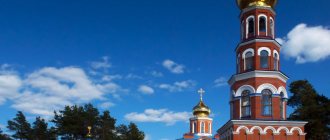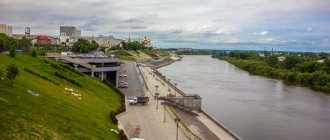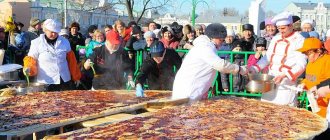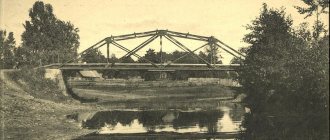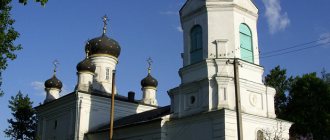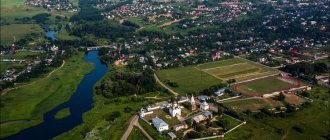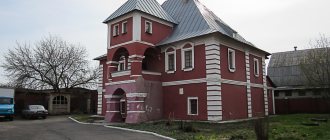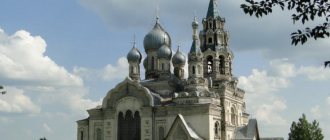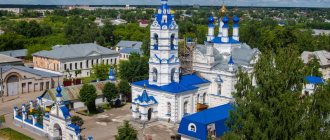17:17, August 16, 2022, PAI
Summer is slowly but surely coming to an end, but holidays and vacations are still going on. However, relaxing and going to interesting, picturesque places in the Pskov region is not prohibited at any time of the year. For a small family trip, you don’t need to look at the calendar; better study the map and this mini-navigator. After reading it, you will only need to choose the direction to your liking.
The procedure for issuing license plates in Russia
Let's consider the most common type of numbers in the Russian Federation:
These are the numbers that are installed on most cars.
At first glance, the number consists of a random sequence of letters and numbers. In fact, not everything is so simple here.
All numbers from 0 to 9 are used on license plates. However, unlike numbers, not all letters of the Russian alphabet can appear on license plates. This privilege is given only to those letters that have similar spellings in the Latin alphabet. Those. Only the letters A, B, E, K, M, N, O, R, S, T, U, X can be used on license plates.
You might have learned about this fact before, but the next thought will probably seem interesting to you. We will talk about the order in which the numbers are issued .
Demographics[edit]
Population
: 673,423 people (2010 census);
[12] 760,810 (2002 census); [30] 846,449 (1989 census). [31] Vital statistics for 2012 The Pskov region has the worst birth-to-death ratio in Russia. [32]
- Births: 7,323 (11.0 per 1,000)
- Deaths: 12,949 (19.5 per 1000) [33]
- Total Fertility Rate: [34]
2009 - 1.52 | 2010 - 1.51 | 2011 - 1.54 | 2012 - 1.66 | 2013 - 1.68 | 2014 - 1.70 | 2015 - 1.74 | 2016 - 1.79 (e)
According to the 2010 census, the ethnic composition was: [12]
- 95% Russian
- 1.3% Ukrainians
- 1% Belarusians
- 0.5% Roma
- 0.4% Armenian
- 0.1% Estonian
- 1.7% others
- 24,630 people were registered in administrative databases and could not indicate their nationality. The proportion of ethnic groups in this group is estimated to be the same as in the stated group. [35]
A notable ethnic minority are the Setos, an ethnic group related to the Estonians. The Setos are traditionally Orthodox Christians and live in the Pechora district in the west of the region.
Religion[edit]
| Religion in the Pskov region as of 2012 (Atlas Sreda Arena) [36] [37] | ||||
| Russian Orthodoxy | 49,6% | |||
| Other Orthodox | 1,5% | |||
| Old Believers | 0,6% | |||
| Other Christians | 5,4% | |||
| Rodnoverstvo and other local religions | 0,8% | |||
| Spiritual but not religious | 17,4% | |||
| Atheism and godlessness | 19,2% | |||
| Other and undeclared | 5,5% | |||
According to a 2012 survey [36], 49.6% of the population of the Pskov region adheres to the Russian Orthodox Church, 5% are unaffiliated general Christians, 2% are Orthodox Christians who do not belong to any church or are members of other (non-Russian) Orthodox churches, 1 % of the population adheres to the movement of the original Slavic faith (Rodnoveri), 1% adheres to the Old Believer Church. In addition, 17% of the population state that they are "spiritual but not religious", 19% are atheists, and 6.4% follow other religions or did not answer the question. [36]
Legacy area codes
| Code | The subject of the Russian Federation | Note |
| 20 | Chechen Republic | before 2000 |
| 80 | Transbaikal region | until 2022 |
| 81 | Perm region | until 2022 |
| 84 | Krasnoyarsk region | until 2022 |
| 85 | Irkutsk region | until 2022 |
| 88 | Krasnoyarsk region | until 2022 |
| 91 | Kaliningrad region | |
| 94 | Territories located outside the Russian Federation and served by the internal affairs bodies of the Russian Federation | until 2022 |
Politics[edit]
Residence of the administration and parliament of Pskov, House of Soviets
During the Soviet period, high authority in the region was divided between three persons: the first secretary of the Pskov Committee of the CPSU (who actually had the greatest powers), the chairman of the regional council (legislative power) and the chairman of the regional council. regional executive committee (executive branch). Since 1991, the CPSU lost all power and the head of the regional administration, and eventually the governor was appointed/elected along with the elected regional parliament.
The Charter of the Pskov Region is the basic law of the region. The Legislative Assembly of the Pskov Region is a permanent legislative (representative) body of the region. The Legislative Assembly exercises its powers by adopting laws, regulations and other legal acts, as well as monitoring the implementation and compliance with the laws and other legal acts adopted by it. The highest executive body is the Regional Government, which includes territorial executive bodies such as district administrations, committees and commissions that promote development and manage the day-to-day affairs of the region. The regional administration supports the activities of the Governor, who is the highest official and acts as a guarantor of compliance with the regional charter in accordance with the Constitution of Russia.
First Secretaries of the Pskov Regional Committee of the CPSU [edit]
During the period when they were the most important authority in the region (from 1944 to 1991), the following first secretaries were appointed, [24]
- 1944-1949 Leonty Antyufeev
- 1949-1951 Gennady Shubin
- 1951-1961 Mikhail Kanunnikov
- 1961-1971 Ivan Gustov
- 1971-1987 Alexey Rybakov
- 1987-1988 Yuri Pogorelov
- 1988-1990 Alexey Ilyin
- 1990-1991 Vladimir Nikitin
Governors[edit]
Since 1991, governors have sometimes been appointed and sometimes elected [25].
- 1991-1992 Appointed head of administration of Anatoly Dobryakov.
- 1992-1996 Vladislav Tumanov was appointed head of the administration.
- 1996-2005 Evgeny Mikhailov, governor, elected.
- 2005-2009 Mikhail Kuznetsov, governor, elected.
- 2009-2017 Andrey Turchak, governor, appointed, elected [26]
- 2017-present Mikhail Vedernikov (acting) [27]
Route around Pskov for 2 days on the map
- What to see in Amsterdam in 1 day - 14 most interesting places
- Hotels in Spain 4 stars all inclusive
- How to get from Kuala Lumpur to Langkawi
- Sri Lanka hotels with a beach without waves
- 15 best resorts in Malta
- Spanish Soria invites you to a truffle fair
- Visa to Australia on your own
- Where to go from Cancun for 1 day - 15 most interesting places
- Reykjavik attractions
- What to see in Tbilisi in 3 days – 18 most interesting places
- Opera Garnier in Paris
- Holidays in Israel all inclusive
Explanations and comments
According to the Order of the Ministry of Internal Affairs of June 26, 2013 No. 478, three-digit codes with the first digit 7 (777, 779, 799, etc.) were introduced in 2013. Instead of the expected 2, the number 7 is used, since a) 2 does not fit into the space allocated for the region code on the registration plate, b) 7 is better recognized by cameras recording offenses. However, a limited series of numbers with codes 277 and 299 were still issued.
According to the Order of the Ministry of Internal Affairs of January 5, 2000 No. 5, in 2000 all license plates of the Chechen Republic were replaced: instead of code 20, code 95 was used. License plates with code 20 can no longer be found on the roads. This measure is related to counteracting the situation of accumulation of criminal vehicles at that time.
In connection with the unification and renaming of regions, changes occurred in some codes:
According to the Order of the Ministry of Internal Affairs of August 7, 2013 No. 605, when reselling a car, it is allowed to keep the old license plates. Replacement with new numbers can be carried out at the request of the new owner. Thus, linking the code on the license plate to the region of residence/registration of the owner ceases to be relevant.
Administrative division[edit]
Main article: Administrative division of the Pskov region
Administratively, the region is divided into two cities of regional subordination (Pskov and Velikiye Luki) and twenty-four districts. Twelve more cities have the status of cities of regional significance. [28]
Limited access[edit]
Territories close to the Estonian-Russian and Latvian-Russian borders are included in the border security zone, intended to protect the borders of the Russian Federation from unwanted activity. None of the cities and towns are currently included in the border security zone. To visit the zone, permission from the local FSB department is required. [29]
Code table
Regions in the table are sorted by number and divided for convenience into blocks according to the first digit. In parentheses after the name of the region are the years in which license plates with the corresponding region code were issued. For such regions, new codes have been introduced, which are listed at the end of the list, indicating the year of entry into force. Regions without indications in brackets use only one code, which is still valid today. To quickly obtain all the codes for a particular region, we recommend using the search form or referring to the list of regions with several codes located below the table.
Transport[edit]
The railway connecting Bologoe and Pskov via Dno and Porkhov crosses the region from east to west. It continues to Pechory and across the border to Tartu, although there is no rail passenger service between Pskov and Estonia. In Pskov it crosses another railway connecting St. Petersburg with Riga via Plyussa, Ostrov and Pytalovo. Gdov is connected by rail to Weimarn via Slantsy. This is part of the railway that ran south to Pskov, however the section between Gdov and Pskov was destroyed during the Second World War and was never rebuilt. In the south there is a railway connecting Moscow with Riga that crosses the region from east to west, passing through Velikie Luki, Novosokolniki and Sebezh. Another railway, running in the east of the region in a north-south direction, connects St. Petersburg through Dno and Novosokolniki with Nevel. At Nevel it splits into two railway lines, both running south-east into Belarus: one line to Vitebsk, and the other to Grodno via Polotsk and Molodechno. Finally, Velikiye Luki is the final station of the railway running northeast to Bologoye.
The road network in the region is relatively dense, with the exception of depopulated wetlands in the east of the region. The two most significant motorways are the M9 motorway, which connects Moscow and Riga and runs from east to west, and the M20 motorway, which connects St. Petersburg and Kyiv, from north to south. Two routes intersect near Pustoshka. Some sections of the road are toll. The island is the northern terminus of the European route E262, which goes to Kaunas via Rezekne and Daugavpils.
The region is served by airports in Pskov and Velikiye Luki. Pskov Airport (Kresty) serves regular flights to Moscow Domodedovo and St. Petersburg Pulkovo. [40] These flights are operated by local airlines.
The lowest part of the Great River is navigable.
Region codes on license plates in 2022
Good afternoon, dear reader.
In this article we will talk about state registration plates (car license plates) . The numbers are assigned to the car during its registration with the traffic police and remain in place until one of the next owners decides to replace them, or the car’s registration is terminated.
Registration marks are unique, i.e. Two different cars cannot have the same number plates at the same time. The numbers always differ by at least one letter or number. Today we will look at the features and procedure for issuing license plates, as well as automobile region codes on the license plates.
Links[edit]
| Wikimedia Commons has media related to Pskov Oblast . |
Notes[edit]
- President of Russian Federation. Decree No. 849 of May 13, 2000 “On the Plenipotentiary Representative of the President of the Russian Federation in the Federal District.” Entered into force on May 13, 2000. Published: “Collection of Legislation of the Russian Federation”, No. 20, Art. 2112, May 15, 2000 (Decree of the President of the Russian Federation of May 13, 2000 No. 849 “ On the Plenipotentiary Representative of the President of the Russian Federation in the Federal District
.” Entered into force on May 13, 2000). - Gosstandart of the Russian Federation. No. OK 024-95 December 27, 1995 “All-Russian classifier of economic regions. 2. Economic regions,” ed. Changes No. 5 / 2001 OKER. (Gosstandart of the Russian Federation. No. OK 024-95 dated December 27, 1995. Russian classification of economic regions. 2. Economic regions
as amended by Amendment No. 5/2001 OKER.). - Article 4 of the Charter of the Pskov Region states that the region may have an anthem, subject to the adoption of the corresponding regional law. As of 2014, there is no such law.
- ↑
Decree of August 23, 1944 - Charter of the Pskov Region, Article 14
- Charter of the Pskov Region, Article 23
- Official website of the Pskov region. Mikhail Yuryevich Vedernikov, acting governor of the Pskov region (in Russian)
- ↑
Charter of the Pskov Region, Article 43. - Federal State Statistics Service (Federal State Statistics Service) (May 21, 2004). "Territory, number, settlements and administrations by subject of the Russian Federation (territory, number of districts, settlements and rural administration by subject of the Russian Federation)". All-Russian Population Census of 2002 (All-Russian Population Census of 2002
). Federal State Statistics Service. Retrieved November 1, 2011. - "On the Calculation of Time". Official Internet portal of legal information
. June 3, 2011. Retrieved January 19, 2022. - An official throughout the Russian Federation in accordance with Article 68.1 of the Russian Constitution.
- ^ abc Federal State Statistics Service (2011). “All-Russian Population Census 2010. Volume 1" [All-Russian Population Census 2010, vol. 1]. All-Russian Population Census 2010 [All-Russian Population Census 2010]
. Federal State Statistics Service. - ^ a b 1september.ru. D.V. Zayats (D.V. Zayats). "Pskov region" ( Pskov region
). - Lesnenko, V.K.; V.N. Abrosov. Lakes of the Pskov region (in Russian). Retrieved November 3, 2014.
- Official website of the Pskov region. Natural resources (in Russian)
- Arakcheev, V.A. Culture and history of the Pskov region (in Russian). Administration of the Pskov region. Retrieved November 5, 2012.
- Decree on the establishment of provinces and on the designation of cities for them (in Russia)
- Archive department of the Administration of the Murmansk region. State Archives of the Murmansk Region. (1995). Administrative-territorial division of the Murmansk region (1920-1993). Directory
. Murmansk: Murmansk publishing and printing enterprise “Sever”. pp. 19–20. - ^ ab Kolomytsev, N.V. Pskov province 225 years (in Russian). Local history archive of the Pskov region. Archived from the original on December 21, 2012. Retrieved April 5, 2012.
- Region (locality). Great Soviet Encyclopedia
. Archived from the original on March 31, 2014. Retrieved November 9, 2012. - Snytko, O.V.; and others. (2009). S.D. Trifonov; T.B. Chuikova; L.V. Fedina; A.E. Dubonosova (ed.). Administrative-territorial division of the Novgorod province and region 1727-1995. Directory (PDF) (in Russian). Saint Petersburg. paragraph 85. Retrieved March 2, 2011.
- "Resolution of the Supreme Soviet of the USSR on the creation of the Pskov region (August 23, 1944)". Retrieved January 1, 2022.
- "Supreme Soviet of the USSR, Decree on the formation of the Pskov region (published version of the image)". pskov.ru
. Retrieved January 2, 2022. - Handbook on the history of the Communist Party and the Soviet Union 1898 - 1991 (in Russian). knowbysight.info. Retrieved August 15, 2014.
- Governors of the Pskov region (in Russian). ProTown.ru. Retrieved May 10, 2012.
- ↑
Schuster, Simon (May 9, 2011) Abandon All Hope: The Russian Region Dying on Europe's Doorstep,
Time (magazine) - Natalya Raibman; Svetlana Bocharova (October 12, 2017).The governor of the Pskov region Andrei Turchak resigned (in Russian). Vedomosti. Retrieved October 13, 2022.
- State Committee of the Russian Federation on Statistics. Committee of the Russian Federation for Standardization, Metrology and Certification. No. OK 019-95 January 1, 1997 “All-Russian classifier of objects of administrative-territorial division. Code 58", ed. changes No. 278 / 2015 dated January 1, 2016. (Goskomstat of the Russian Federation. Committee of the Russian Federation for Standardization, Metrology and Certification. No. OK 019-95 January 1, 1997. Russian classification of administrative divisions) (OKATO).
Code 58 as amended by Amendment No. 278/2015 of 01/01/2016). - “Order of the FSB of the Russian Federation dated June 2, 2006 N 237 “On the border zone on the territory of the Arkhangelsk region”. Russian newspaper
.
2006
. - ↑
Federal State Statistics Service of Russia (May 21, 2004).
“The population of Russia, the constituent entities of the Russian Federation as part of federal districts, urban settlements, settlements, settlements of 3 thousand or more people” [Population of Russia, its federal districts, federal districts, districts, urban settlements, rural settlements - administrative centers and rural settlements with a population of more than 3,000 people] (XLS). All-Russian Population Census 2002
. - “All-Union Population Census of 1989. The current population of union and autonomous republics, autonomous regions and districts, territories, negative phenomena, urban settlements and rural district centers” [All-Union Population Census of 1989: current population of union and autonomous republics, Autonomous regions and districts , territories, regions, districts, towns and villages performing the functions of district administrative centers. All-Union Population Census of 1989 [All-Union Population Census of 1989]
.
Institute of Demography of the National Research University: Higher School of Economics [Institute of Demography of the National Research University: Higher School of Economics]. 1989 - via Demoscope Weekly
. - Russia's population is changing NYTimes, July 28, 2017
- "Natural movement of the population in the context of the constituent entities of the Russian Federation". Gks.ru. Retrieved March 27, 2016.
- "Catalog of publications :: Federal State Statistics Service". Gks.ru. Retrieved March 27, 2016.
- “Census 2010: there are more Russians.” Census-2010.ru. December 19, 2011. Retrieved August 13, 2012.
- ^ abc "Arena: Atlas of religions and nationalities of Russia". Wednesday, 2012.
- 2012 Arena Atlas Religious Maps. “Ogonyok”, No. 34 (5243), 08/27/2012. Retrieved 04/21/2017. Archived.
- Industrial structure and dynamics of industrial production (in Russian). Retrieved October 31, 2012.[ permanent dead link
] - Agriculture of the Pskov region (in Russian). Portal of Russian-Japanese economic cooperation. Retrieved October 31, 2012.[ permanent dead link
] - Pskovavia flight schedule. Retrieved April 20, 2014


